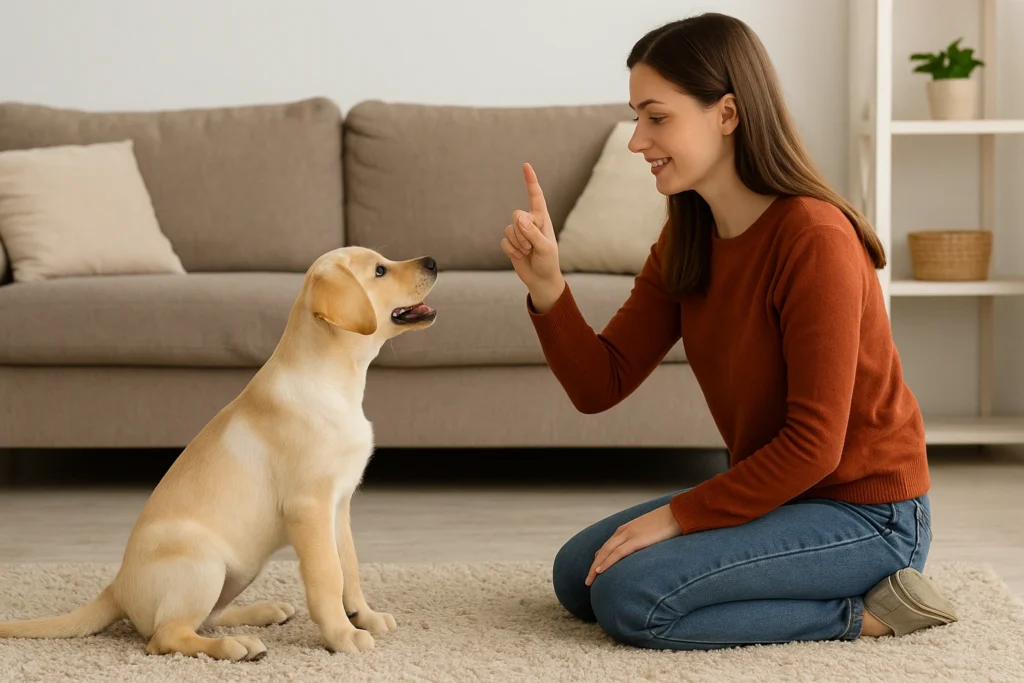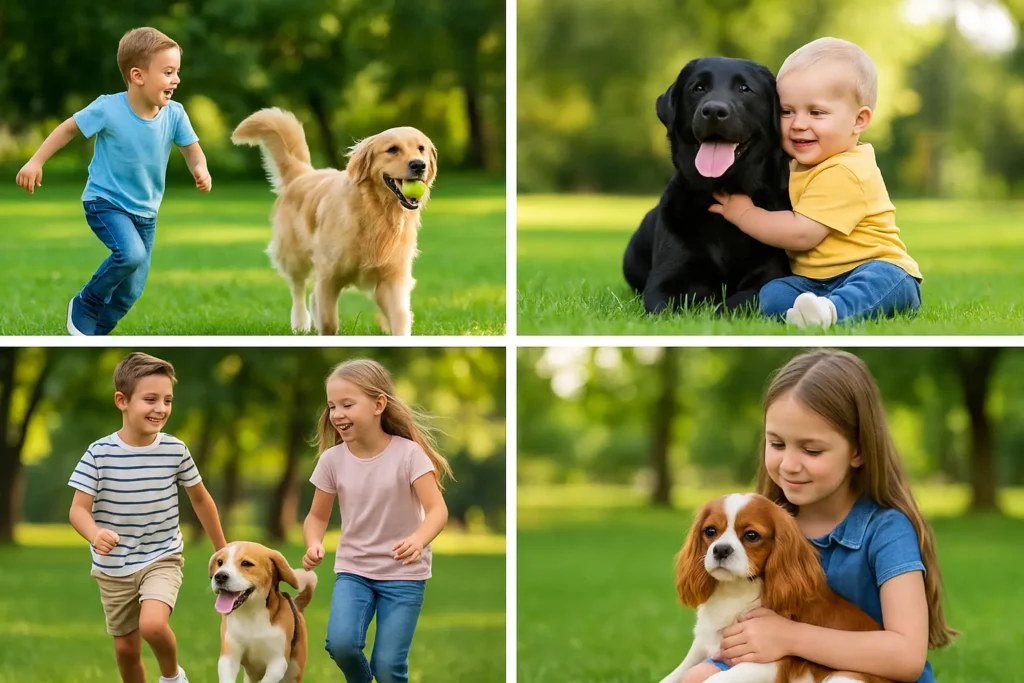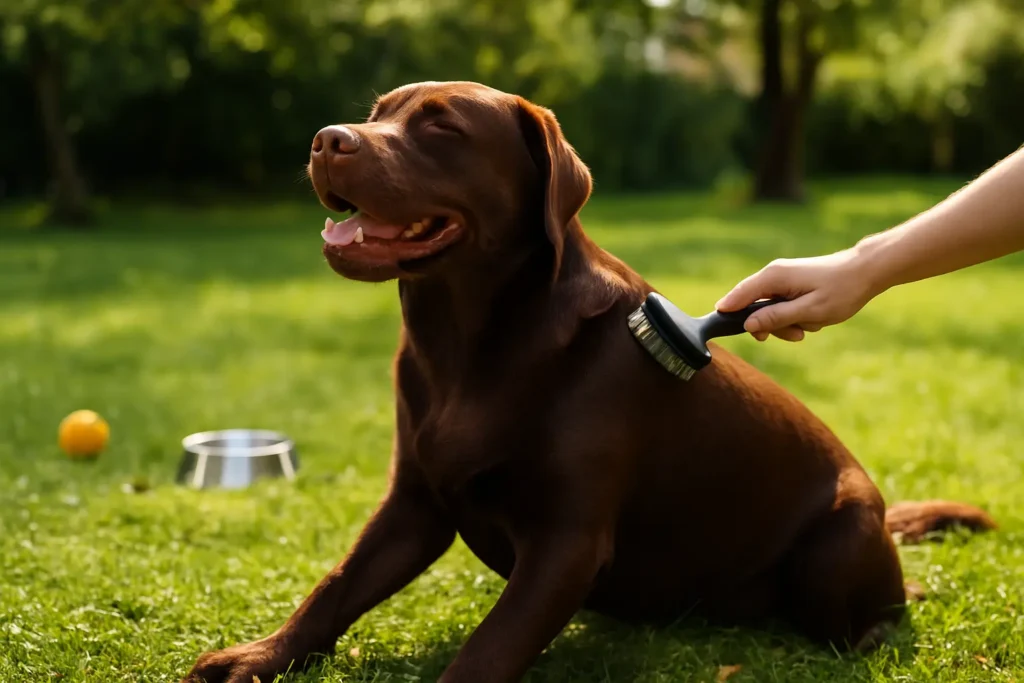Welcoming a dog into your home is an exciting, heartwarming moment — whether you’re adopting a playful puppy or giving a second chance to an older rescue.
But here’s the truth: those first few weeks are more than just cuddles and cute photos. They are the foundation for your dog’s entire behavior, personality, and relationship with you.
One of the most powerful ways to set your dog up for a lifetime of good habits is early training.
Starting training from day one isn’t about being strict — it’s about guiding your dog into a happy, confident, and well-adjusted companion.
In this guide, you’ll learn:
- Why early training is crucial for new dog owners
- The best time to start (and why waiting is risky)
- Practical, easy training tips for beginners
- Common mistakes to avoid
- Recommended tools to make the process smoother
Why Early Dog Training Matters
Dogs are natural learners. In the first few months of life, puppies go through rapid brain development and are highly impressionable. This is when habits — good or bad — take root.
Starting training early gives you the chance to shape positive behaviors before problem habits develop. It’s far easier to teach a puppy to sit for attention than to untrain a dog that jumps on every visitor.
1. Builds Good Behavior Habits
Dogs are creatures of habit. If you allow certain behaviors early on, they become part of your dog’s normal routine — and those bad habits can be hard to break later.
Early training helps you:
- Stop jumping on guests before it becomes a habit
- Teach leash manners so walks are pleasant, not stressful
- Encourage calm behavior around food, toys, and new people
Tip: Even if your puppy is tiny now, picture them as a full-grown dog. That cute jumping today could become a dangerous knockdown later.
2. Helps Socialize Your Puppy
Socialization means introducing your dog to different people, animals, environments, and sounds in a positive way. Dogs who aren’t socialized are more likely to become fearful, anxious, or aggressive as adults.
Early socialization includes:
- Meeting people of different ages, appearances, and clothing styles
- Seeing bicycles, wheelchairs, strollers, and skateboards
- Experiencing various surfaces (grass, gravel, tile, carpet)
- Hearing traffic, vacuum cleaners, and doorbells
Weekly Socialization Plan (First 8 Weeks at Home)
Week 1–2:
- Introduce household noises (vacuum, TV, hairdryer) at a distance.
- Meet at least 3 different adults and 2 children in a safe setting.
Week 3–4:
- Short car rides.
- Visits to friends’ homes with calm, vaccinated dogs.
- Gentle handling practice (paws, ears, tail).
Week 5–6:
- Introduce busier outdoor settings (markets, parks).
- Walk on grass, concrete, sand, and gravel.
Week 7–8:
- Controlled exposure to bicycles, skateboards, and joggers.
- Practice calm behavior in small crowds.
Each new experience should be safe, short, and positive. Use treats and praise to help your dog associate new things with good feelings.
3. Strengthens the Owner–Dog Bond
Training sessions are bonding sessions. When you train your dog using positive reinforcement, you’re building trust and communication.
This bond means your dog is more likely to:
- Look to you for direction in new situations
- Trust you in stressful environments
- Listen when it really matters — like if they’re about to run into the street
4. Makes Future Training Easier
A dog that learns early to pay attention, follow cues, and work for rewards will pick up more advanced skills later with ease.
This includes:
- Off-leash recall
- Loose-leash walking in busy areas
- Tricks like “roll over” or “shake”
- Specialized work like therapy visits or agility sports
Training is like building muscle — the earlier you start, the stronger the “learning habit” becomes.
When Should You Start Training?
The short answer: Immediately. The moment your dog comes home, training begins. No matter their age. But for puppies, there are specific developmental stages to know.
Puppy Stage (8–12 Weeks)
By eight weeks, puppies are ready for short, positive training sessions. Start with the basics:
- Sit
- Come
- Name recognition
- Touch (targeting your hand with their nose)
Keep sessions short (5–10 minutes) and use small, tasty treats.
Socialization Period (3–16 Weeks)
This is the most important window in a dog’s life. Experiences during this period shape their confidence for years.
- Meet new people daily
- Visit safe new places
- Let them explore different surfaces (grass, concrete, gravel)
- Introduce gentle handling (touch paws, ears, tail)
Missing this window can make training harder later.
Can You Train Older Dogs?
Yes, but it takes more patience. Older dogs may have ingrained habits, but they can still learn with consistent, reward-based training. Focus first on building trust before tackling bigger behavior changes.
Early Puppy Training Tips for Beginners
Training doesn’t require fancy tools — just patience, consistency, and rewards your dog loves.
1. Focus on Basic Commands
Commands like Sit, Stay, Come, and Down are the foundation for good behavior.
Sit — Helps with impulse control.
Stay — Keep them in place when needed.
Come — Vital for safety.
Down — Encourages calmness.
Example for teaching “Sit”:
- Hold a treat close to your dog’s nose.
- Slowly move your hand upward so their head follows and their bottom lowers.
- Say “Sit” and give the treat as soon as they sit.
Troubleshooting Sit Command
- If your dog jumps for the treat, keep it closer to their nose.
- If they back away, practice in a corner to limit movement.
(Recommended Tool: PetSafe Clik-R Training Clicker) — a simple way to mark the exact moment your dog gets it right.
Once you’re ready to begin, check out the First 10 Dog Training Commands every owner should start with.
2. Crate Training & Housebreaking
A crate is your best friend for house training and keeping your puppy safe when unsupervised.
- Choose a crate just large enough for your dog to stand and turn around.
- Never use the crate as punishment.
- Take puppies outside frequently — every 2–3 hours, plus after eating, drinking, or playing.
A crate can:
- Help with potty training
- Provide a safe space when you’re not home
- Reduce destructive chewing
Tips:
- Choose the right size — just enough room to stand, turn, and lie down
- Introduce it gradually with treats and toys
- Never use it as punishment
Read: Essential Dog Training Commands for First-Time Owners for more on building obedience skills.
3. Positive Reinforcement
Reward what you like; ignore or redirect what you don’t. Positive reinforcement can be:
- Small, tasty treats
- Play with a favorite toy
- Verbal praise in a happy tone
(Recommended Treat: Zuke’s Mini Naturals Dog Treats) — perfect for training because they’re small and low-calorie.
4. Keep It Short & Fun
Multiple 5-minute sessions per day work better than one long, boring session. End on a success so your dog is eager to train next time.
New Deep-Dive: Training Essential Life Skills
Leash Walking Basics
- Start indoors with a lightweight leash.
- Reward for staying close without pulling.
- Move to a quiet outdoor space before busy streets.
Recall (“Come”) Training
- Use a happy, excited tone.
- Reward heavily when they come — even if slow.
- Never call them to punish.
Impulse Control (“Leave It / Wait”)
- Hold a treat in your closed hand.
- Say “Leave it.” Reward only when they stop trying.
- Practice with dropped food, toys, or doorways.
Common Mistakes New Owners Make (and How to Fix Them)
Even with the best intentions, new owners can make errors that slow down training or create bad habits. The good news? Every mistake can be fixed with a little patience and consistency.
Mistake 1: Inconsistency
The Problem: Different family members using different commands or allowing different behaviors confuses the dog.
The Fix:
- Create a training plan with everyone in the household.
- Use the same commands and hand signals for each behavior.
- Example: If “off” means stop jumping for you, it should mean the same for everyone.
Mistake 2: Using Punishment
The Problem: Yelling, hitting, or using harsh methods can create fear, anxiety, and even aggression.
The Fix:
- Focus on positive reinforcement: reward the behaviors you want to see.
- Redirect unwanted behavior instead of punishing. For example, if your dog chews a shoe, give them a chew toy instead.
- Stay calm — dogs respond better to consistent guidance than to emotional outbursts.
Mistake 3: Skipping Socialization
The Problem: Dogs that aren’t exposed to varied experiences may grow up fearful or reactive.
The Fix:
- Follow a weekly socialization plan (like the one earlier in this blog).
- Reward calm behavior in new situations.
- If your dog is anxious, take smaller steps — don’t force them into overwhelming scenarios.
Mistake 4: Expecting Too Much Too Soon
The Problem: Hoping your puppy will learn everything in a week leads to frustration for you and your dog.
The Fix:
- Focus on small, daily wins instead of rushing.
- Keep training sessions short and upbeat.
- Remember: every dog learns at their own pace — patience pays off.
More Real-World Scenarios
Sometimes the best way to understand early training is to see it in action.
Case Study 1: Sarah and Max (Labrador)
Sarah started leash walking Max indoors from day one. She rewarded every calm step beside her. Within a month, Max could walk through a busy park without pulling, even with distractions like squirrels and kids playing.
Case Study 2: Priya and Coco (Beagle)
Priya adopted Coco, a 6-month-old beagle who barked at every passing car. She started with controlled exposure — sitting with Coco in a quiet area and rewarding calm behavior as cars passed. Over three weeks, Coco’s barking reduced by 80%, and walks became a peaceful routine.
Case Study 3: James and Rocky (German Shepherd)
James struggled with Rocky’s habit of jumping on visitors. By teaching “Sit” as the default greeting and rewarding Rocky only when all four paws stayed on the ground, James saw a complete turnaround in two weeks. Now, Rocky sits politely for pats every time someone enters.
The result? A confident, well-behaved dog who greets strangers politely and ignores squirrels on walks.
Expert-Backed Insights
According to the American Kennel Club (AKC), early training combined with proper socialization can reduce behavior problems by up to 60%.
A 2020 study from the University of Lincoln found that puppies who began obedience training before 12 weeks were less likely to develop aggression as adults.
Frequently Asked Questions
Q: What if my puppy bites during training?
A: Puppies use their mouths to explore. Redirect biting to a toy, and stop play if biting continues.
Q: Can I train my puppy without treats?
A: Yes, but treats speed up learning. You can also use play, petting, or access to favorite spots as rewards.
Q: How many sessions should I do per day?
A: 3–5 short sessions are ideal for puppies. Older dogs can handle fewer, longer sessions.
Q: Is professional training worth it?
A: For complex issues or advanced skills, a certified trainer can be invaluable — but basic obedience can be done at home.
Q: Is group training worth it?
Yes — it builds focus around distractions and improves social skills.
Q: How soon can I take my puppy to public places?
After their second round of vaccinations — but safe socialization can happen earlier in controlled environments.
Recommended Supplies for Early Dog Training
You don’t need to break the bank — just a few essentials:
- Training treats – Small, soft, and irresistible.
- Clicker – For marking good behavior.
- Leash & harness – For safe walks and control.
- Crate – For housebreaking and safe downtime.
If you’re not sure where to start, check out our upcoming guide to Best Dog Training Tools for Beginners.
Conclusion
Early dog training isn’t about being strict — it’s about setting your dog up for a lifetime of good behavior, confidence, and trust.
Start small, be consistent, and make training fun. Whether it’s teaching “Sit” in your living room or introducing your puppy to the world outside, each step you take now will pay off for years to come.
Your future self (and your well-behaved dog) will thank you.
Next Step: Read our guide on Essential Dog Training Commands for First-Time Owners to expand your dog’s skill set.




